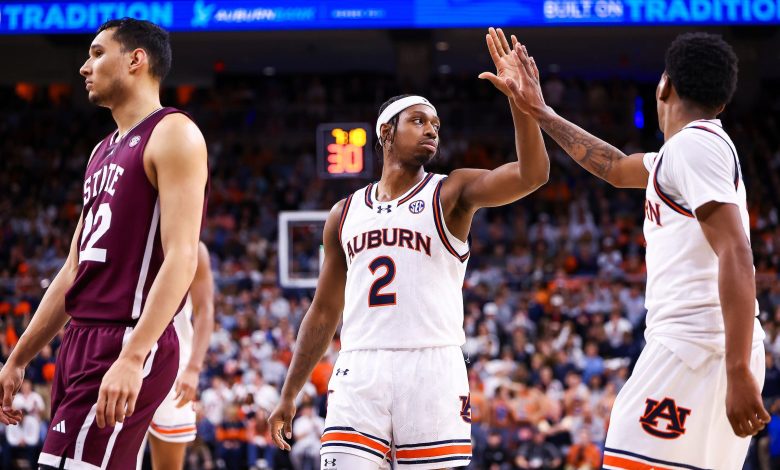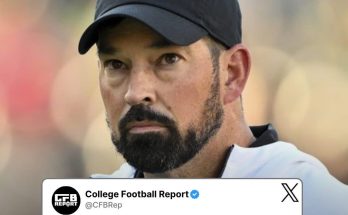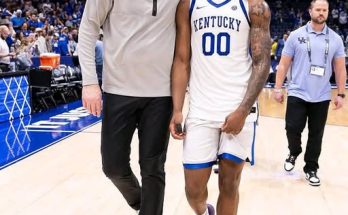Mailbag 195: Auburn Basketball and the Art of the “Kill Shot”
Auburn basketball has built a reputation over the past few years as one of the most dynamic programs in the country. Under the leadership of head coach Bruce Pearl, the Tigers have consistently found ways to excite fans, confound opponents, and win games in dramatic fashion. One of the team’s signature strategies that has emerged over time is the use of what Pearl and his staff have come to call the “kill shot.”
The term itself is not unique to basketball. In sports and other competitive arenas, a “kill shot” refers to a decisive blow that changes the trajectory of a contest, often delivering a knockout punch to the opposition. For Auburn basketball, however, the concept is much more nuanced and deliberate, representing a specific approach to dominating critical moments of the game. In this article, we’ll explore the philosophy behind Auburn’s “kill shot,” how it manifests on the court, and why it’s become an integral part of the team’s success.
The Philosophy of the “Kill Shot”
At its core, the “kill shot” is about momentum. Basketball is often described as a game of runs, where teams trade periods of scoring bursts and defensive dominance. Auburn’s version of the “kill shot” aims to create an extended run that breaks the opponent’s spirit and seizes control of the game. These moments are marked by a combination of suffocating defense, transition offense, and three-point shooting that feels overwhelming for the opposition.
Bruce Pearl often emphasizes that the “kill shot” is not something that happens by chance. It requires preparation, execution, and a keen sense of timing. It’s about capitalizing on an opponent’s weaknesses, exploiting mismatches, and amplifying the intensity when the opportunity arises.
“You can’t always predict when the moment will come,” Pearl said in a recent interview. “But when it does, you have to be ready to pounce. That’s what we train for.”
Key Elements of Auburn’s “Kill Shot”
1. Relentless Defense
The foundation of Auburn’s “kill shot” strategy is its defense. Pearl’s teams are known for their aggressive, high-energy defensive schemes that force turnovers and bad shots. The Tigers excel at applying full-court pressure, disrupting passing lanes, and using their athleticism to contest every possession.
When Auburn turns up the heat defensively, it often leads to a cascade of mistakes by their opponents. Turnovers lead to fast-break opportunities, and before long, a close game can turn into a double-digit deficit for the other team. The psychological toll of this defensive intensity cannot be overstated; opponents often find themselves rattled and unable to recover.
2. Transition Offense
Auburn’s ability to convert defense into offense is another critical component of the “kill shot.” The Tigers thrive in transition, using their speed and athleticism to score quickly before the opposing defense can set up. Players like Wendell Green Jr. and Johni Broome have been instrumental in pushing the pace, either by making pinpoint outlet passes or finishing at the rim.
Transition offense also allows Auburn to energize their home crowd, which plays a crucial role in the momentum shift. The roar of the Jungle—Auburn’s passionate student section—can make an 8-0 run feel like a 20-0 avalanche for the opposing team.
3. Three-Point Barrages
No “kill shot” would be complete without Auburn’s signature weapon: the three-point shot. Under Pearl’s leadership, the Tigers have embraced the modern game’s emphasis on perimeter shooting. Players like K.D. Johnson and Jaylin Williams have shown the ability to hit clutch threes that amplify the impact of a scoring run.
What makes Auburn’s three-point shooting so dangerous is its unpredictability. The Tigers have multiple players capable of getting hot from beyond the arc, and they’re not afraid to take shots in transition. A quick sequence of back-to-back threes can swing the momentum of a game in an instant, leaving opponents scrambling to respond.
Signature “Kill Shot” Moments
Auburn’s “kill shot” strategy has been on full display in several key games over the past few seasons. Here are a few notable examples:
1. 2019 NCAA Tournament Run
During their magical run to the Final Four in 2019, Auburn’s “kill shot” moments were a recurring theme. In the Sweet 16 matchup against North Carolina, the Tigers unleashed a second-half blitz that included a barrage of three-pointers and stifling defense. What had been a competitive game quickly turned into a rout, with Auburn cruising to a 97-80 victory.
2. 2022 SEC Tournament
In the SEC Tournament quarterfinals against Texas A&M, Auburn found themselves in a tightly contested game midway through the second half. A series of defensive stops, punctuated by a pair of transition threes from Jabari Smith, ignited a 15-2 run that put the game out of reach. The “kill shot” not only secured the win but also sent a message to the rest of the conference about Auburn’s championship aspirations.
3. Regular Season Clashes
Even in regular-season play, Auburn’s ability to deliver “kill shots” has been a hallmark of their success. Against rivals like Alabama and Kentucky, the Tigers have consistently used these momentum-shifting runs to take control of games and energize their fanbase.
The Psychological Impact
The “kill shot” isn’t just about the physical execution of basketball plays; it’s also a psychological weapon. Opponents who fall victim to Auburn’s devastating runs often struggle to regain their composure. The Tigers’ ability to sustain their intensity during these moments creates an aura of inevitability, where it feels like everything is going their way.
For Auburn players, the “kill shot” is a source of confidence. Knowing they have the tools and training to deliver a knockout blow gives them a mental edge in tight games. It’s a mindset that Pearl and his coaching staff have worked hard to instill.
Challenges and Limitations
While the “kill shot” is a powerful weapon, it’s not without its challenges. For one, it requires a high level of execution that can be difficult to maintain over the course of a long season. If the Tigers aren’t hitting their shots or if their defensive intensity wanes, their “kill shot” moments can fizzle out, leaving them vulnerable to counterattacks.
Additionally, teams that are well-prepared for Auburn’s style of play can mitigate the impact of the “kill shot.” By controlling the tempo and minimizing turnovers, disciplined opponents can limit Auburn’s opportunities to capitalize on momentum swings.



